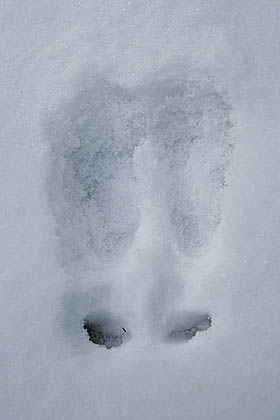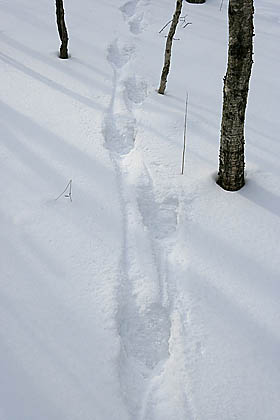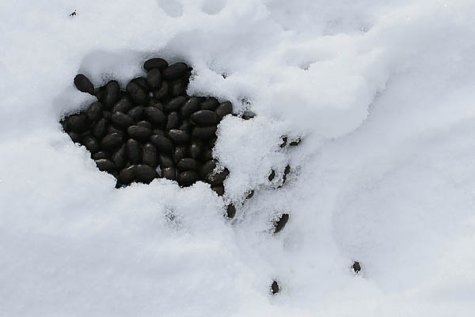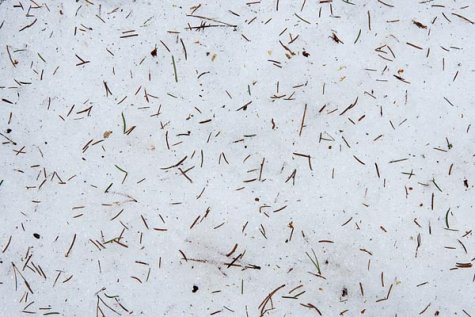Elk tracks
Photos: Arne Ader
Translation: Liis
Elk imprint
Elk; Moose (US) Põder Alces alces
In winter elks move around much less than in other seasons. A full-grown elk bull is just under two metres at the shoulder, length three meters and weight – for a big individual – up to six hundred kilos: impressive!
They spend the winter in drier forests situated higher up; in spring they move to floodplains, bogs, marshy forests with better feeding conditions.
The tracks of an elk cannot be confused with any other animal tracks in Estonia. The imprints are 12 to 16 centimetres long for an adult animal. At the end of the forefoot imprint the dewclaw (or rudimentary toe) prints can be seen. Moving normally the stride length is one and a half up to two meters. The imprint size and stride length of young animals are smaller – evident at once who has been moving here.
Elk trail in birch stand in a bog. Ristsaare, Alam-Pedja
The hind foot steps nearly into the print of the forefoot or stays a little behind it. With the hoof tips a double line is often drawn in the snow but if this line is preserved of course depends on the snow. In deep snow the elk cannot be bothered to raise its feet particularly high up; then we see a so-called ”walking furrow”.
Elk droppings
Elk droppings are two to three centimetres long and up to two centimetres wide. Sometimes the droppings are more rounded; this depends on the food but also on the individual. The winter droppings have more fibrous matter, since twigs are eaten, and this shows.
Spruce needles on snow
In the forests of Central Estonia the first shedding of spruce needles has started.












